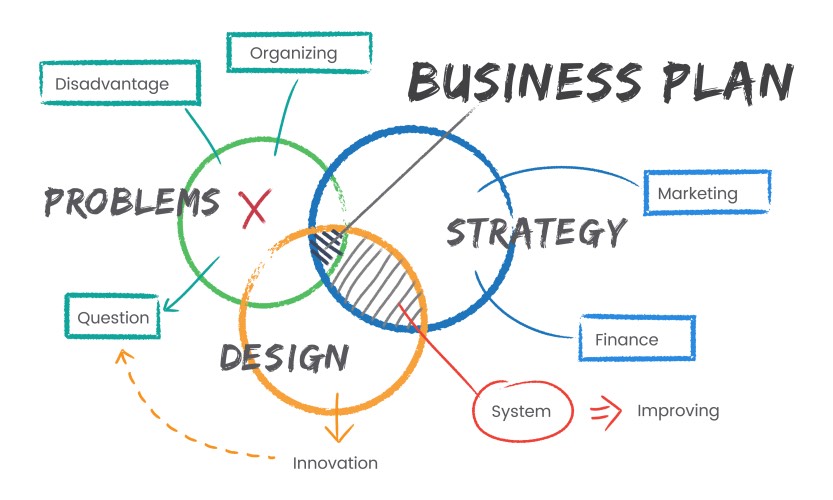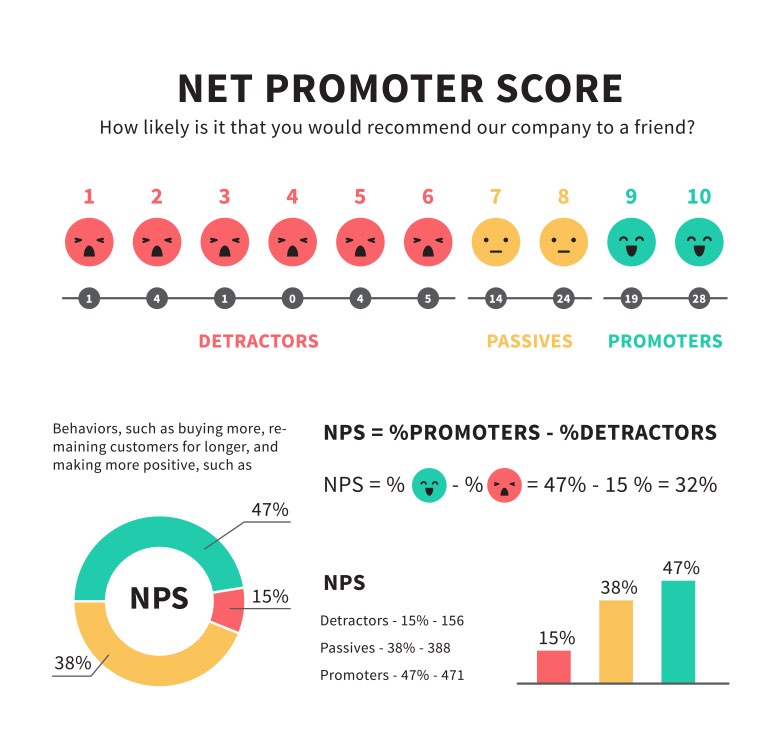Starting a tech startup can be an exciting and challenging journey. The tech industry is a rapidly evolving landscape that offers numerous opportunities for innovation and growth. So, you want to start a tech company. You’re not alone – in recent years, the tech industry has boomed, and there are now more startups and new companies than ever before. But with so much competition, how can you make sure that your company is successful?
Technology companies have become the most valuable brands in the world. For example, Apple, Microsoft, Alphabet, Amazon, and Facebook are called the big five. Whether you have a groundbreaking idea, a passion for technology, or simply want to be your own boss, this guide will help you navigate the process of launching your tech startup.
To successfully launch your tech startup , you need not only an innovative idea but also a carefully crafted plan. This plan will outline all the important steps in creating your own company. Here are the key steps to get you startedHere are the key steps to get you started.
What it takes to get your tech (startup) company up and running
Starting a tech company takes more than just a great idea. Of course, that’s where it all starts- with a nagging feeling that there’s a better way to do things or a solution to a problem that nobody has thought of yet.
But before you can even start to think about building the next big thing, you need to have a strong foundation in place. That means having a team of experienced developers who can turn your vision into reality, a rock-solid business plan, and the financial backing to get things off the ground.
It’s also important to have a clear understanding of the market you’re entering, as well as the competition. With so many moving pieces, it’s no wonder that starting a tech company is not for the faint of heart. But for those with the drive and determination to see it through, the rewards can be huge.
In this article, we’ll be covering the various aspects of establishing a tech business so you never have to worry about how to start a tech company or ponder about where to get started.
12 Actionable Steps to Get Your Tech Company Off the Mark
It’s easy to get caught up in the glamour of launching a successful startup with the possibility of it becoming the next Google or Facebook. However, because of the proliferation of overnight success stories, too many founders dive into entrepreneurship without a plan, limiting their chances of fortune and glory.
Every successful tech startup begins with a passion for solving a problem. Start by identifying a problem that matters to you and that you believe can be addressed with a technological solution. Your enthusiasm and commitment to the problem will be a driving force in your startup’s success.
1. Gather your Thoughts into a Cohesive Idea
There’s something you should know: More than 95% of startups fail because they don’t make a product people need. While the stats paint a bleak picture, knowledge is on your side. By having a solid idea to build, market, and sell, your tech startup can survive.
The first step in starting your own tech startup/company is coming up with an idea. But not just any old idea – it has to be a great one. Something that will fill a need in the market, that people will be excited about, and that you’re passionate about.
It’s not easy to come up with an idea that meets all those criteria, but it’s essential if you want your tech company to succeed.
So where do you start? A good place to look for inspiration is your own life. What problems do you encounter on a daily basis? Is there something you wish existed that doesn’t? Chances are if you have a problem, there are others out there who feel the same way.
Another great source of ideas is your network of family and friends. Ask them what they wish they had in their lives, or what they think is missing from current solutions to problems they have. Finally, don’t forget to stay up-to-date on trends in the tech industry. This will help you identify potential gaps in the market and come up with ideas that are truly innovative.
Once you have a few ideas, it’s time to start narrowing things down. Evaluate each idea based on its potential for success. Does it fill a need in the market? Is there a large enough target audience? Is it something you’re passionate about?
Once you’ve settled on an idea, it’s time to start putting together a plan for turning it into a reality.
2. Conduct a Planning and Market Research
Before taking any further steps, it’s important to do your homework and make sure there’s a market for what you’re planning to sell. This involves understanding your target customer, your competition, and what needs aren’t being met in the market.
Not doing your market research is a sure way to doom your business before getting it off the ground. This helps you know the nature of your tech business and also can figure out who your target demographic is. Market research aims to validate the business idea regarding the strategy, target customer, product, and marketing communications, etc. For a startup to be truly market-driven, it must observe, engage, and continuously listen to the market system.
Thorough market research is essential. Understand your target audience, their needs, and the competition. Analyze market trends, customer behavior, and emerging technologies. This information will help you refine your idea and tailor your solution to the specific needs of your potential customers.
These insights will help you determine whether or not starting a tech company is the right move for you. Conducting market research can seem daunting, but there are a few key methods you can use to get the information you need.
First, consider talking to people who would be potential customers for your product or service. Ask them about their pain points and what they look for when making a purchase. You can also read industry-specific news and articles, as well as reviews of similar products or services.
Finally, don’t forget to check out your competition directly to see what they’re doing right (and wrong).
3. Develop your Customized Strategy
Any viable business idea needs a strong value proposition at its core. This is what will drive potential customers or users to your product or service, and it needs to be clear and concise. Once you have your value proposition, you can start developing your customized strategy.
This strategy should take into account your business model, unique situation, and resources, as well as the specific market you’re targeting. Analytics can be a valuable tool in this process, helping you to understand your users and what they’re looking for.
Pre-advance marketing can also be helpful in getting the word out about your company before you launch. Having a solid go-to-market strategy in place gives you the freedom to repeat success by analyzing and monitoring every touchpoint in the entire development process.
And once you have that big picture established, then it’s important to have that essence distilled down into your culture, your passion, and your mission. Every component of your company, from the name, logo, and domain should be a reflection of that identity.
Do you need help starting your own tech company and make it a success?
Contact Growth Hackers
4. Define and Build your Product
A tech company is only as good as its product. In order to build a successful tech company, you need to have a well-defined product that meets the needs of your target market. Here are some tips on how to define and build your product:
Start with your objectives
What are you trying to achieve with your product? What needs does it meet? Once you know your objectives, you can start to design features and functionality that will help you achieve them.
Nailing down the features, collecting feedback and validating the concept is critical to ensuring your product roadmap is pointed in the right direction. Since 42% of failed startups close down because of poor product-market fit, making informed choices at this stage is critical to survival.
Keep your target market in mind
Who are you building this product for? What needs do they have that your product can address? As you design your product, make sure that it delivers the insights you have about your target market and consider how typical users battle everyday constraints.
Make sure your product is easy to use
Remember, people are using your product to solve a problem or meet a need. If they can’t figure out how to use it, they’ll move on to something else. Keep your user interface simple and straightforward, and make sure there’s ample documentation available to help people get started. In addition to considering numerous paid usability services, get a real test user to interact with your product and collect valuable customer feedback.
Now, with your prototype and business registered, focus on developing your product or service. Hire developers and designers as needed to create a polished and functional solution. Regularly test and refine your product based on user feedback.
Pay attention to detail
The little things matter when it comes to product design. From the logo to the color scheme, everything should be carefully considered and executed. Little details can make a big difference in how people perceive your product. Make use of the numerous creative and professional services to get your designing tasks right.
5. Chalk out a MVP
An MVP or minimum viable product is a bare-bones version of your product that allows you to gather feedback and test your concept without sunk costs. What you want is to adopt the lean startup methodology to launch fast, test and iterate.
MVP is the most basic version of your product (built quickly and cheaply), which aims to validate if people are interested in your business and are willing to pay for it.
What are the specific problems your MVP is solving? Is it REALLY serving a need or is it just something that you find interesting? This is a crucial turning point, as not being able to find a market is the #1 reason that most startups fail – noted in 42% of reported cases . You have to do more than demonstrate how you’ve solved the problem; you have to get others to understand why it’s a problem and why they want it solved in the first place.
It’s important to keep your MVP in project management simple. Complex products are more expensive to build and require more resources to maintain. By keeping your MVP simple, you can save time and money while still getting valuable feedback from users.
So how do you create an MVP? The first step is to identify the core features of your product. Then, prioritize those features and build the simplest version possible that still meets user needs.
Once you’ve got your MVP, it’s time to start marketing it and collecting feedback. Use online channels like social media and forums to reach potential customers, and make sure to listen to user feedback so you can make improvements to your product.
6. Back yourself with a Reliable Tech Team
The right development team. You can work with freelancers or with an outsourcing company. Using freelance workers allows us to keep costs down by paying freelancers an agreed amount for a project or work completed over a fixed time period.
When you’re starting a tech company, one of the most important steps is building a reliable tech team. This will help you build a resilient SMB. This team will be responsible for developing and managing your company’s technical infrastructure, so it’s important to take the time to assemble a group of qualified and experienced individuals. Here are a few tips for putting together a strong tech team:
1. Start by identifying the skills and experience you need. What specific expertise will your team need to have in order to be successful? Make a list of these requirements and use it to narrow down your candidate pool.
2. Don’t be afraid to reach out to your personal network. Chances are you know someone who would be perfect for your team, so don’t hesitate to ask around.
3. Take your time with the hiring process. This is not an area where you want to cut corners, so make sure you conduct thorough interviews and reference checks before making any offers.
From there it’s time to build a team of complementary skills.
7. Define your Business Plan
A business plan serves as a roadmap for your business and will help you articulate your goals, strategies, and financial projections. It should include a market analysis, competitive landscape, management team bios, and a detailed financial model. Create professional quality flowcharts on your entrepreneurial idea and get the details in there.
Your tech startup needs time. You can get started quickly, but you’ll still need to learn and customize everything to your unique business model, product, and organization. Create a detailed business plan that outlines your solution, your target audience, your value proposition, and your revenue model. Your business plan will serve as a roadmap for your startup’s future.
Once you have assembled your business plan, you will need to raise capital from investors. This can be done through equity financing, debt financing, or a combination of both. Once you have secured funding, you will need to find a suitable location for your business and begin hiring employees.
The final step is to launch your product or service and start generating revenue. Creating a Venn diagram to visualize your business plan will often be better than writing a 30-page document.
8. Get Familiar with Tech Startup/Company Legalities
Before you can start your tech company, it’s important to get familiar with the legalities involved. Once you have a clear business plan and a working prototype, it’s time to register your business. Choose a legal structure, register your company name, and address any necessary licenses or permits. Consult with legal and financial experts to ensure compliance with local regulations. This includes understanding the different types of business entities and choosing the right one for your company.
You’ll also need to obtain the necessary licenses and permits, and register your business with the government. While this may seem like a lot of work, taking the time to get everything in order will save you headaches down the road. To get started, consult with an experienced business attorney who can help you navigate the legal landscape of starting a tech company or startup.
Also, give a lot of thought to naming your tech startup or company. Of course, using an online domain availability checker can help you quickly generate company names and avoid the hassle of getting caught up in fancy brand names.
9. Focus on Furthering your Product Launch
Now that you’ve decided to launch your tech company, it’s time to take some concrete steps to make it happen. Branding, website creation, and dedicated web hosting are important first steps.
After completing all the above-listed factors, your tech startup is now set to launch. Before launching your startup , be prepared to launch campaigns that will help you launch better in the market.
You’ll need to create a strong branding identity for your company, including a logo, tagline, and color scheme to speak your brand’s image and personality to its users.
Then, you’ll need to build a website. You can create a DIY website yourself using a simple website wireframe tool or use a free online web application for the same. You can also hire a web designer to build something more sophisticated.
Hosting is another important consideration; you’ll need to choose a reliable web hosting service featuring your requirements and make sure your site is secure. Once your branding and website are up and running, you can start marketing your products and services to potential customers.
10. Adopt the Right Marketing Strategies
The go-to-market strategy is marketing your product before reaching a product-market fit. Many people think marketing or sales is a black box. But with analytics and several new technologies, entrepreneurs can optimize their products from a very early stage to accelerate business. A go-to-market strategy starts with a strong value proposition, so once you are clear on your value proposition, build a landing page, start running targeted ads (Meta and Google ads to begin with) and use the power or search engines by creating SEO-optimized content.
Any tech business needs the right marketing mix to become successful. The most common mistake tech companies make is trying to do too many things at the same time, without focus. It’s important to understand that effective marketing is more than just creating a website and social media accounts.
You can develop a very good product — but without marketing, it will be difficult to sell. Even when all you have is the idea or MVP, it is better to find a person who will attract the first customers. A marketing manager will help present the tech startup to investors and increase the chances of fundraising.
It’s also about having a clear understanding of your target audience and what channels they use to consume information. Once you’ve identified your target audience, you can start developing a marketing strategy that resonates with them.
Develop a marketing strategy to promote your product and attract customers. Some key components of an effective marketing strategy for tech startups include content marketing, search engine optimization (SEO), pay-per-click advertising (PPC), social media marketing, and email marketing. Of course, each company is different and there’s no one-size-fits-all solution.
However, these are some of the most effective marketing channels for tech startups. The key is to start with one or two channels and then expand from there once you’ve seen success. Trying to tackle too many channels at once will only lead to frustration and wasted resources.
The tech industry is ever-changing, and successful startups continually innovate and adapt. Keep an eye on emerging trends, customer needs, and technological advancements. Be open to pivoting if necessary to stay competitive and relevant.
Now is the time to start your own tech company and make it a success!
11. Monitor your Metrics
As a tech entrepreneur, it’s critical that you focus on the right metrics when growing your company. If you have a sales funnel in place, then the numbers will guide your way forward.
Need help in getting feedback on your product? Make use of early adopters / initial users to help create and refine. Not only will this provide helpful assistance and new perspectives, the more you are able to share the burden, the more you mitigate the risk of burnout.
In the context of a tech startup or new company, here are three key metrics you should monitor closely to regulate your funding and maximize the use of limited resources.
Active Users
Without a steady stream of users, you won’t be able to generate the data you need to improve your product, attract investors, or grow your business. That’s why it’s important to carefully monitor your active users from the very beginning. There are a few key metrics you should focus on:
- Number of new users: This will give you an idea of how quickly your company is growing.
- Engagement: Are users coming back to your product on a regular basis? Are they using it for long periods of time?
- Churn: How many users are leaving your product each month? This is a particularly important metric to watch in the early stages of your company, as it can give you insights into user satisfaction.
If something’s broken, find out what it is and fix it. Practice agile methodology . As your team and product scales, it gets too complex to manage informally. Agile helps startups build products in quantifiable sprints of work, and in short enough cycles to adjust to customer feedback. Get funded, scale your team . If you’ve made it this far, you have a validated idea. To make money and grow, you just need to double down on what works. That’s what funding gives you the freedom to do.
Net Promoter Score (NPS)
Your NPS is a measure of customer satisfaction that can help you gauge how likely your customers are to recommend your products or services to others.
Once you have your NPS score, it’s important to track it over time so you can see how it changes as your business grows. You can also use it to compare yourself against other companies in your industry. If you’re consistently seeing a high NPS score, it’s a good sign that you’re doing something right!
Retention Rate
As any experienced entrepreneur knows, one of the most important metrics to track when building a tech company is the retention rate of active users. In order to grow a successful business, it is essential to not only attract new users but also to keep them engaged and using the product on a regular basis.
By monitoring the retention rate of active users, startups and new companies can ensure that they are building a product that people will actually use, and not just something that gathers dust on a shelf.
12. Scale your Business Model
It isn’t easy to manage a business as it is to start tech company. Scaling efficiently means ensuring that your company can grow without sacrificing quality or productivity. It can be difficult to strike the right balance but to be a successful startup, new business or entrepreneur, you need to put in the hard work.
Consider this step as a summarization of all the above-mentioned measures. And to summarize:
Define your target market
Take the time to research your target market and understand their specific needs. This will help you tailor your offering and go-to-market strategy to meet their requirements.
Build a strong team
As your business grows, you’ll need to build a strong team of professionals who can help take it to the next level. Look for individuals with complementary skillsets and experience in scaling businesses.
Establish partnerships
Forming strategic partnerships can be key to efficient growth. Look for companies or organizations that complement your own offerings and who share your vision for growth. These partnerships can help you reach new markets and expand your customer base more quickly than going it alone.
Invest in technology
Technology can be a powerful tool for scaling your business efficiently. Invest in systems and processes that will automate repetitive tasks, free up resources, and allow you to scale quickly and efficiently.
By following these steps, you’ll be on your way to building a tech company that scales efficiently and effectively.
Final Thoughts on How to Start a Tech Company
The tech business field can be a daunting place for newcomers. With its ever-changing landscape and fierce competition, it can be tough to know where to start – or even where to turn for help. That’s where Growth Hackers comes in.
Something we haven’t mentioned is fundraising (Raise money). It is difficult to start a technology company and launch a product on the market without a big investment. Almost always, tech startups do not have enough funds to develop the product. You may looks for angel investors, venture capital investment or opt for bootstrapping. Whether you’re looking for support from venture capitalists, friends, family or angel investors (or really either, you probably can’t afford to be picky) you should develop your short pitch and understand what specifically they’re looking for. Alongside accelerators and angel investors, crowdfunding is one of the few funding options available in the early stages before a product generates real revenue. All options are viable depending in your funding needs.
Growth Hackers offers some of the best content marketing services and has years of experience helping successful entrepreneurs navigate the challenges of the tech landscape. From developing a strong branding strategy to launching an effective marketing campaign or locating a reliable web hosting company, our team at Growth Hackers has the knowledge and expertise to help your tech business succeed.
In addition, our hands-on approach means that we’re always up-to-date on the latest tech solutions, trends, and changes in the tech world. So, whether you’re just starting out or you’ve hit a roadblock, Growth Hackers can help you overcome the challenges of starting your own tech company.
Contact Growth Hackers today and let us know how we can be of help to grow your business sustainably.










